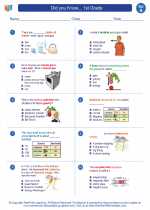Spinal Cord
The spinal cord is a long, thin, tubular bundle of nervous tissue and support cells that extends from the brainstem to the lumbar region of the vertebral column. It is an essential part of the central nervous system and plays a crucial role in transmitting nerve signals between the brain and the rest of the body.
Anatomy of the Spinal Cord
The spinal cord is made up of nerve cells and bundles of nerve fibers. It is protected by the vertebrae of the spine and is surrounded by cerebrospinal fluid, which provides cushioning and support. The spinal cord is divided into different regions, each of which controls specific functions of the body.
Functions of the Spinal Cord
The spinal cord serves several important functions, including:
- Transmission of nerve signals: The spinal cord acts as a pathway for transmitting nerve signals between the brain and the body.
- Reflex actions: It coordinates reflex actions, such as pulling your hand away from a hot surface without having to think about it.
- Control of voluntary movements: It plays a crucial role in controlling voluntary movements, such as walking and running.
- Sensory processing: The spinal cord processes sensory information from the body, such as touch, temperature, and pain.
Study Guide
Key Concepts
- Anatomy of the spinal cord
- Functions of the spinal cord
- Protection and support of the spinal cord
- Role in reflex actions and voluntary movements
Important Terminology
- Vertebrae
- Cerebrospinal fluid
- Nerve signals
- Reflex actions
- Sensory processing
Study Tips
- Use diagrams and illustrations to understand the anatomy of the spinal cord.
- Practice identifying the different regions of the spinal cord and their functions.
- Understand the role of the spinal cord in reflex actions and voluntary movements through real-life examples.
- Review the protection and support mechanisms of the spinal cord.
By understanding the anatomy and functions of the spinal cord, you will gain a deeper insight into its importance in the nervous system and its role in controlling various bodily functions.
.◂Science Worksheets and Study Guides First Grade. Did you Know... 1st Grade

 Worksheet/Answer key
Worksheet/Answer key
 Worksheet/Answer key
Worksheet/Answer key
 Worksheet/Answer key
Worksheet/Answer key
 Vocabulary/Answer key
Vocabulary/Answer key
 Vocabulary/Answer key
Vocabulary/Answer key
